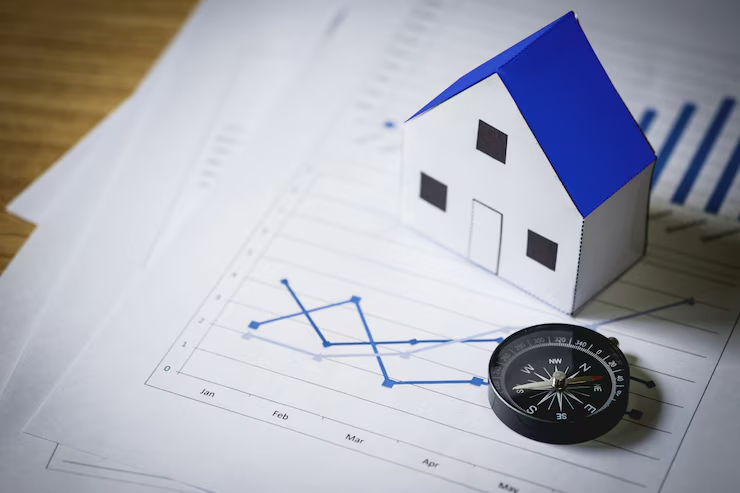
Understanding the mortgage loan process is essential for anyone looking to buy a home. It involves several key steps, from pre-approval to closing, that guide borrowers through securing financing. The process helps determine how much a lender is willing to loan, the best type of mortgage for the borrower’s needs, and the payment structure.
There are different types of mortgage loans, including fixed-rate, adjustable-rate, and government-backed options, each with specific features affecting interest rates and repayment terms. Payments typically consist of principal, interest, taxes, and insurance, all of which impact monthly affordability.
Knowing these basics allows borrowers to make informed decisions and manage expectations throughout their home-buying journey. This overview covers the core elements that anyone engaging with a mortgage loan should understand.
Understanding the Mortgage Loan Process
The mortgage loan process involves several distinct steps designed to confirm a borrower’s eligibility and the property’s value. It requires careful coordination between the applicant, lender, and third parties like appraisers. Key considerations include meeting minimum mortgage requirements for 2025 and understanding how property value impacts loan terms.
Key Steps in the Mortgage Loan Process
The process typically starts with the borrower gathering financial documents. Lenders require proof of income, credit history, and employment verification to assess risk. Borrowers must meet minimum credit score and down payment requirements set for 2025.
Once documentation is complete, the lender evaluates the borrower’s debt-to-income ratio. This ratio helps determine loan eligibility against median home prices in the borrower’s state. Mobile home prices rising faster than single-family home prices can also affect loan conditions for specific property types.
Pre-Approval and Application
Pre-approval allows buyers to understand their borrowing limits and shows sellers they are serious. During pre-approval, the lender performs a preliminary credit check and reviews income. This step is important before house hunting or making offers.
The application follows pre-approval and requires detailed financial disclosures. This is when the lender formally starts the underwriting process. Real estate agent fees and commissions do not affect the loan approval but impact overall closing costs.
Home Appraisal and Underwriting
An independent appraiser assesses the home to confirm its market value, influencing the loan amount. Accurate square footage calculation is crucial during appraisal, as home size directly affects value. The underwriter reviews all documents and the appraisal to decide whether to approve the loan.
The underwriting process examines risks using historical mortgage rate data from the 1970s to 2025. This ensures the loan terms align with current economic and market conditions before final approval.
Types of Mortgage Loans

Mortgage loans come in various forms, each designed to suit different financial situations and goals. Understanding the key features, interest structures, and eligibility criteria helps borrowers choose the right option. This section breaks down three common types of mortgage loans.
Fixed-Rate Mortgages
Fixed-rate mortgages have a constant interest rate and monthly payment throughout the loan term. This stability benefits borrowers who plan to stay in their home long-term and prefer predictable expenses. Typical loan terms range from 10 to 30 years.
Because the rate doesn’t change, monthly payments for principal and interest remain the same, though taxes and insurance can vary. Fixed rates are often higher at the start compared to adjustable loans but offer protection against future rate increases. This type is widely available for conforming and jumbo loans.
Adjustable-Rate Mortgages
Adjustable-rate mortgages (ARMs) feature interest rates that adjust periodically after an initial fixed period, often 3, 5, 7, or 10 years. The rate changes based on market indexes plus a set margin.
ARMs usually start with lower rates than fixed loans but carry the risk of payment increases after the adjustment period. Borrowers seeking lower initial payments or planning to sell or refinance within a few years may consider ARMs. Caps limit how much the interest rate can rise or fall on each adjustment and over the loan’s life.
FHA Loans
FHA loans are government-backed mortgages designed to help first-time buyers or those with lower credit scores qualify for financing. They require smaller down payments, often as low as 3.5%.
These loans carry mortgage insurance premiums and have more flexible underwriting compared to conventional loans. FHA loans do not apply to jumbo mortgage rates or construction loans specifically but serve many borrowers needing access to credit. The program supports homeownership, especially for those who might not qualify for traditional fixed or adjustable loans.
Government-Backed and Specialty Mortgages
These mortgage options offer specific benefits tailored for unique borrower needs, such as military service, rural property purchase, or high-value homes. They commonly involve different qualification criteria, loan limits, and insurance requirements compared to standard loans.
VA and USDA Loans
VA loans, backed by the Department of Veterans Affairs, are designed for eligible veterans, active-duty service members, and certain spouses. They often require no down payment and do not charge private mortgage insurance (PMI), reducing upfront and monthly costs.
USDA loans support rural and suburban homebuyers with low to moderate income. They also typically offer zero down payment, fixed interest rates, and reduced mortgage insurance costs. Eligibility depends on location and income limits set by the USDA.
Both loan types require borrowers to meet specific service or geographic criteria. VA loans focus on honoring military service, while USDA loans target rural development and affordability.
Jumbo Mortgages
Jumbo mortgages finance properties exceeding conforming loan limits set by Fannie Mae and Freddie Mac. These loans usually require higher credit scores, larger down payments (often 20% or more), and rigorous financial documentation due to increased lender risk.
Interest rates on jumbo loans tend to be higher than conforming loans but can be competitive depending on the market. Borrowers should compare current jumbo mortgage rates carefully, as small rate differences significantly affect monthly payments on large loan amounts.
Unlike FHA loans, which are government-backed and have loan limits usually under $600,000, jumbo mortgages are private and lack federal insurance, making them less accessible but necessary for higher-priced homes.
Understanding Mortgage Payments

Mortgage payments include several components that affect the total monthly amount a borrower must pay. These components consist of loan repayment, taxes, insurance, and sometimes additional fees tied to the loan conditions.
Principal and Interest Explained
The principal is the amount borrowed from the lender. Each payment reduces this balance until the loan is fully repaid.
Interest is the cost charged by the lender for borrowing money. It is calculated as a percentage of the remaining principal balance.
Monthly payments primarily consist of principal and interest. Early payments mostly cover interest, while later payments apply more toward the principal.
The interest rate directly influences the payment amount. Fixed-rate loans keep the same interest rate for the loan term, while adjustable-rate loans may change over time.
Property Taxes and Insurance
Property taxes are levied by local governments based on the home’s assessed value. These taxes can fluctuate yearly and affect monthly payments.
Homeowners insurance protects against risks such as fire, theft, or natural disasters. The average cost of homeowners insurance in May 2025 is approximately $1,600 annually, or about $133 per month.
Lenders often require borrowers to pay estimated taxes and insurance monthly as part of their mortgage payment, then hold these funds in an escrow account. This prevents missed payments and protects the lender’s investment in the property.
Private Mortgage Insurance (PMI)
PMI is required when a borrower’s down payment is less than 20% of the home’s purchase price. It protects the lender if the borrower defaults.
The cost of PMI varies but generally ranges from 0.3% to 1.5% of the original loan amount annually.
PMI payments are added to the monthly mortgage and can increase the borrower’s expenses significantly.
Once the loan balance reaches 80% of the home’s value, PMI can often be canceled, reducing the monthly payment. Borrowers should regularly monitor their loan-to-value ratio to request PMI removal when eligible.
Factors Influencing Mortgage Approval
Mortgage approval depends heavily on financial stability and the borrower’s ability to repay the loan. Lenders focus on specific criteria such as creditworthiness and upfront funding to assess risk.
Credit Score and Income Requirements
A key factor in mortgage approval is the borrower’s credit score. For 2025, most lenders require a minimum credit score of around 620 to qualify for conventional loans, though higher scores typically secure better interest rates. Borrowers often wonder, Can you raise your credit score by 100 points in 30 days? While quick improvements are difficult, focused efforts on reducing debt and correcting errors can boost scores enough to improve loan prospects.
Income verification is equally critical. Lenders look for steady income that comfortably covers monthly mortgage payments plus other expenses. Typically, debt-to-income (DTI) ratios below 43% are preferred, reflecting the borrower’s ability to manage additional debt. Those with higher DTI or lower credit scores might explore personal loans with a cosigner in 2025 to strengthen their financial profile before applying.
Down Payment Considerations
The size of the down payment directly affects mortgage approval and loan terms. Most lenders require a minimum of 3% to 5% down for conventional mortgages. A larger down payment, such as 20%, eliminates the need for private mortgage insurance (PMI) and lowers monthly payments.
Low down payments can increase lender risk, so borrowers must demonstrate compensating factors like higher credit scores or income. Government-backed loans, like FHA loans, allow down payments as low as 3.5%, but still require proof of financial stability.
Borrowers should assess how much they can afford to put down versus the potential cost of smaller payments with added insurance or higher interest rates when considering the minimum mortgage requirements for 2025.
Refinancing Your Mortgage

Refinancing can adjust loan terms to better fit a borrower’s financial situation. It often involves comparing interest rates, loan types, and repayment plans to maximize benefits. Understanding when and why to refinance impacts both monthly payments and long-term costs.
Reasons to Refinance
Borrowers refinance primarily to reduce monthly payments by securing a lower interest rate. This can save thousands over the loan’s life. Another common reason is changing the mortgage term, for example, from 30 to 15 years, to pay off the loan faster.
Refinancing can also serve to consolidate debt. By rolling high-interest debts into the mortgage, borrowers might lower overall interest expenses, though this could affect credit scores if managed improperly.
Some refinance choices enable borrowers to switch from adjustable-rate to fixed-rate loans for payment stability. Others may tap home equity to fund major expenses or investments.
When to Refinance
Refinancing makes sense when interest rates drop by at least 0.5% to 1% compared to the current rate. Small differences often don’t cover closing costs. Borrowers should calculate break-even points to decide if refinancing is financially worthwhile.
Timing also depends on credit health. A stronger credit score after debt consolidation can unlock better refinance rates. However, applying for multiple loans or too frequent refinancing can temporarily lower credit scores.
Borrowers should avoid refinancing if planning to sell the home soon, as closing fees may outweigh benefits. Additionally, refinancing when existing mortgage penalties or rising fees are involved generally is not cost-effective.
Mortgage Rates and Market Trends

Mortgage rates depend on various financial indicators and borrower risk factors. Market trends fluctuate based on economic conditions, influencing affordability and loan demand.
How Mortgage Rates Are Determined
Mortgage rates generally track closely with the 10-year U.S. Treasury yield because it reflects long-term economic expectations. Lenders add a margin based on borrower credit risk and loan characteristics.
Key interest benchmarks include the Prime Rate, which affects adjustable-rate mortgages, and the federal funds rate, set by the Federal Reserve, influencing short-term lending costs.
The COFI (Cost of Funds Index) is used in some regions to set rates on adjustable loans, reflecting local banking costs rather than national markets.
Historical mortgage rates peaked in the early 1980s near 18%. They have mostly declined since, hitting historic lows in the 2010s and early 2020s.
Current Mortgage Rate Trends
As of mid-2025, mortgage rates range near 7% for 30-year fixed loans, up from roughly 3% during 2021-2022. This rise corresponds with Federal Reserve rate hikes to curb inflation.
Despite slowing inflation, home prices remain elevated, limiting purchase power for many buyers. Refinancing activity has reduced significantly due to higher rates.
Adjustable-rate mortgages have seen a slight increase in popularity as borrowers seek lower initial payments compared to fixed-rate options.
Lender competition and credit availability continue to affect individual rates and loan approval standards.
Economic Factors Impacting Rates
The Federal Reserve’s federal funds rate decisions heavily influence mortgage costs by affecting bank lending rates. In 2024-2025, ongoing rate increases aimed to slow inflation have pushed mortgage rates higher.
Inflation slowing signals potential rate stabilization, but persistent price pressures keep rates elevated.
Global economic conditions, such as supply chain issues and geopolitical risks, create uncertainty impacting bond markets and Treasury yields.
Housing market supply shortages and demand imbalances also indirectly impact rates by influencing home prices and borrower risk assessments.
Key indicators to watch include inflation data, Fed statements, Treasury yields, and consumer confidence metrics.
Home Equity and Related Financing Options

Homeowners can access their property’s value through different financing options that use home equity as collateral. These options offer varying structures, interest rates, and repayment terms, catering to different financial needs and preferences.
Home Equity Loans
A home equity loan is a fixed-rate loan based on the accumulated equity in a home. Borrowers receive a lump sum upfront and repay it over a set term, usually 5 to 30 years.
Interest rates for home equity loans in May 2025 generally range between 6.0% and 7.5%, influenced by credit score and lender policies. They offer predictable monthly payments, making budgeting simpler.
The main advantage is stable repayment, but borrowing limits depend on creditworthiness and the amount of equity, often capped at 80% to 85% of the home’s appraised value minus the mortgage balance.
Home Equity Line of Credit (HELOC)
A HELOC is a revolving credit line secured by home equity, allowing borrowing up to a limit during a draw period, typically 5 to 10 years. Borrowers can withdraw funds as needed and make interest-only payments on the amount used.
Current home equity line of credit rates in May 2025 vary but often start around 7.0% variable APR. Rates can increase or decrease with market changes, affecting payments.
Key pros of a HELOC include flexibility and lower initial payments. Cons include variable interest rates and the potential for increased debt if not managed carefully. It is suitable for ongoing expenses or projects requiring intermittent funding.
Costs, Fees, and Additional Considerations

Understanding the various costs involved in obtaining and maintaining a mortgage loan is crucial. These expenses can significantly impact the total amount paid over the life of the loan and vary by location, loan type, and service providers.
Closing Costs Overview
Closing costs typically range from 2% to 5% of the home’s purchase price. They include fees for the loan application, appraisal, title insurance, and attorney services. Real estate agent commissions, often 5% to 6% of the sale price, are usually paid by the seller but can influence the overall cost structure in the market.
Buyers should also anticipate prepaid expenses such as homeowner’s insurance and property taxes due at closing. Median home prices influence closing costs directly; higher home values usually mean proportionally higher fees. Understanding these elements helps buyers prepare for a sizeable upfront financial commitment.
Ongoing Loan Servicing Fees
Loan servicing fees cover the administrative costs of managing the mortgage. These include monthly charges for processing payments, maintaining records, and managing escrow accounts for taxes and insurance.
Some lenders charge a loan servicing fee, often around $30 to $50 monthly, but many incorporate these into the interest rate or waive them. Additional fees may arise for late payments or special requests like payoff statements. Borrowers should review their servicing agreement to anticipate ongoing costs that affect monthly budgets.
Impact of Market Conditions on Homebuyers
Market conditions strongly influence home affordability and buyer decisions. Interest rates and economic factors shape loan costs and timing, affecting whether buyers move forward or pause their plans.
Buying in a High-Rate Environment
When mortgage rates rise, monthly payments increase even for the same loan amount. For example, a 1% rate increase on a $300,000 loan can raise monthly payments by over $150. This often reduces buyers’ purchasing power, pushing them toward smaller or less expensive homes.
High rates can also slow market activity as fewer buyers qualify or are willing to pay more. However, some buyers lock in rates to avoid further increases. Historically, rates have ranged from near 20% in the early 1980s to under 3% in recent years, showing fluctuation over decades.
Adjustable-rate mortgages (ARMs) may appeal in these environments, but they carry future uncertainty. Fixed-rate loans offer predictability but at higher current costs.
Recession Fears and Homebuying
Concerns about recessions can cause buyers to delay purchases, fearing job loss or declining home values. Despite these risks, many economists advise not letting short-term fears stop long-term plans, especially if financing is stable.
Home prices often dip slightly during recessions but tend to rebound. Mortgage rates can also fall as central banks cut rates to stimulate the economy, creating buying opportunities.
Buyers with strong credit and steady income may find better deals during downturns. Delaying indefinitely may lead to higher prices and rates later, especially since rate cycles typically last several years.




